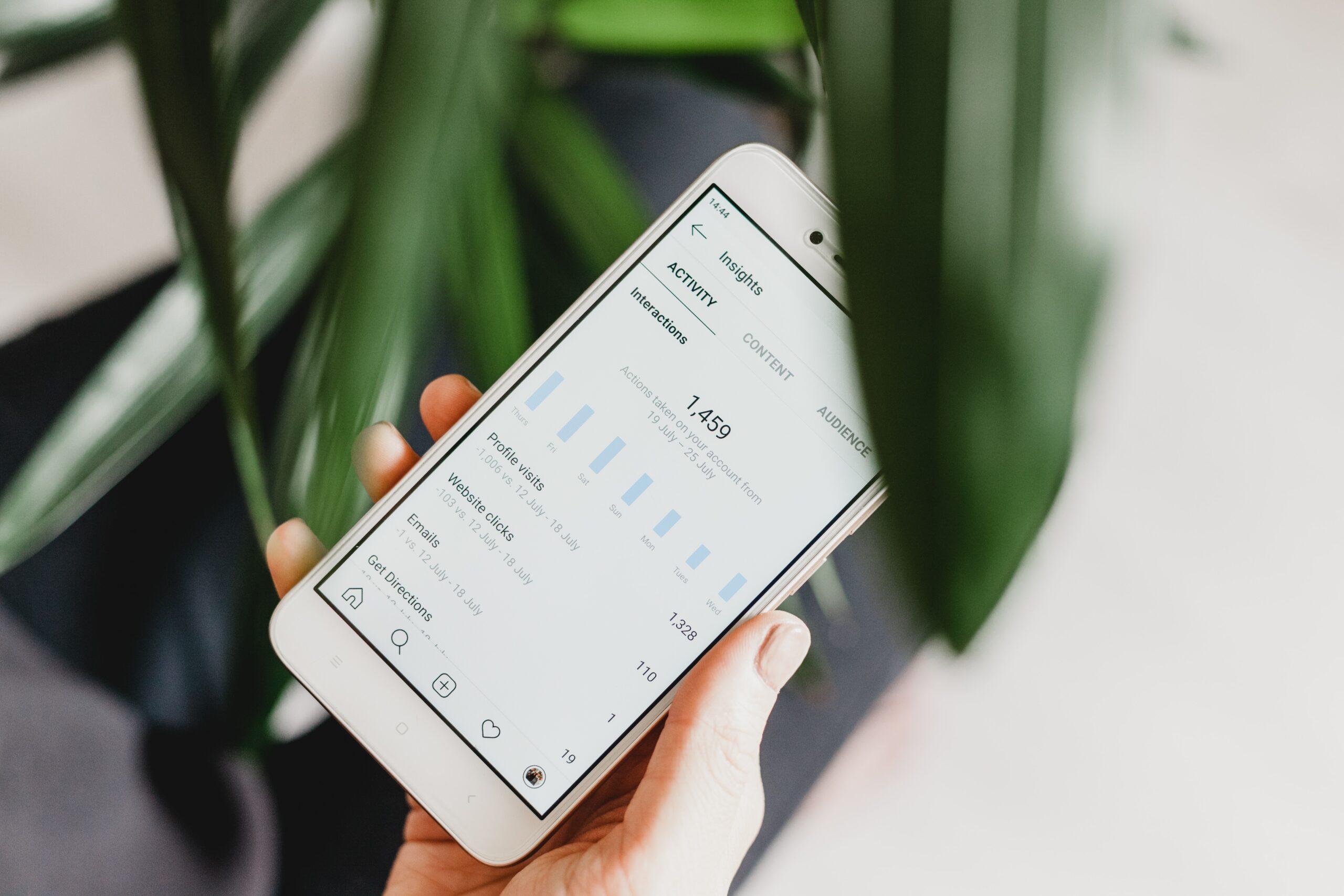The paid ads that show up on news feeds on social media are dark posts. Despite their prominence, many brands aren’t sure of what dark posts are and how they fit into the marketing mix. Only a small percentage realize how much opportunity and revenue could come from dark posts and the content that they’ve already paid for.
Table of Contents
Dark posts are not a black hat tactic or “dark” in any way. They’re common on social media and offer numerous benefits, especially when combined with influencer marketing.
What is Dark Posting?
Dark Posts are paid media that don’t appear in an influencer’s timeline, stories, or page. They aren’t visible in the newsfeed, unless they’re targeted. They may also be known as unpublished page posts, meaning they’ll show up as Facebook ads in the feeds of targeted users.
Dark posts may be called by alternative names like influencer whitelisting, advertising access, boosting, or paid amplification.
In order for a brand or influencer marketing agency to obtain usage rights (first-party influencer data) to proceed in the curation of these ads, they must first whitelist an influencer. This gives advertiser permissions to both an Influencer’s Instagram and Facebook accounts, allowing brand partners to optimize influencer-generated content.
Once access is gained, brand partners have access to back-end information on influencer posts and can decide how best to retarget the content. Whether they choose to build out lookalike audiences or use the data for more in-depth audience targeting, the goal is to drive higher conversion rates and increase sales.

From our “Ocean Potion” Campaign
How Dark Posts Impact ROI
With influencer marketing, dark posting is a solution that addresses declining organic reach by ensuring that content can be retargeted to users who are likely to engage, click-through, or buy. Instead of relying on the limited performance time frame of content, marketers can target it to a specific audience.
When dark posts are aligned with the target audience of the brand and the influencer, the brand can essentially reach the target audience with influencer content. The brand’s content stays top of mind for users, and because the posts are native, many users don’t view them as a pushy ad interrupting their feed.
When gaining influencer advertising access, or whitelisting, brands can be precise and target new niche audiences. For example, brands can leverage lookalike audiences on Facebook using followers who already engaged with influencers. This expands the reach to include not only the recommendations from the platform, but the audiences most likely to interact with certain influencers.
In some cases, the users will be existing followers of the influencer, but they may be people who are likely to engage but haven’t yet. They do fall in the audience for the content, however. Taking this approach benefits both the brand and the influencer, drawing more followers for both.
Running dark ads in an influencer campaign should be part of the initial brand partnership agreement. Influencers should retain some shared usage rights to the content. They may also request extra compensation for whitelisting, but it’s usually worth the extra cost to get more traction out of high-performing ad creatives.
When influencer content reaches high performance, it can be optimized across audiences, adjusted for different call-to-action phrases, copy, creative, headlines, and landing pages, and retargeting can be used to increase ad account performance by large percentages.
When to Use Dark Posts

Image: Lisa from our Hello Panda campaign.
Brands can gain a lot from dark posts, but they’re not appropriate for every situation.
Boosted ads, for example, are a more common type of ad on social media. These ads have been amplified to reach a wider or more specific audience for more ad spend. When posts are boosted, they show up in the feed of the audience like a normal ad (they don’t know they were paid to amplify) to reach a wider range of users and improve views, engagement, leads, or sales.
Organic posts are posts that have no budget behind them. Similar to SEO, these posts are ranked according to keywords and other factors. Target keywords, related hashtags, and other optimization methods ensure that the content is not only optimized for search, but for the social media newsfeed.
Organic posts can be seen by a lot of people, but the number of users that can be reached with unpaid posts is becoming more and more limited. And determining what’s working and what isn’t for a specific organic post is tedious and time-consuming. This is why many brands use a combination of paid and organic social posts.
Some situations call for either boosted or organic posts, but others benefit more from dark posts.
Dark posts should be used to:
- Optimize content via A/B testing and determine the best performance for different variables.
- Gain precise Facebook ads targeting or prospecting. They can not only retarget previous audiences or segments, but they can be used to attract new leads according to different demographics or behaviors.
- Run dark posts from different identities and ensure the ads run side-by-side with other brand ads.
- Eliminate clutter on a page and reduce the number of promotional posts that users come across. Instead of spamming an audience with constant ads, dark posts can run independent of the main business page and reach new users without compromising the existing audience.
- Improve ad performance on social media. Creating dark posts offers opportunities for brands to deliver better results than by simply boosting content.
- Optimize budget across an entire ad campaign. Instead of guessing, brands can allocate the budget in a more balanced way to maximize spend and minimize waste.
- Deliver specific content to a targeted audience. All content should have a target audience in mind. As the audiences become more specific, the messaging may need to be adjusted accordingly. Dark posts can target specific content to specific users and achieve goals that may be different than the rest of the campaign.
Dark posting also allows brands to test other opportunities outside of the content itself, such as graphic design tools, software, video editors, and more, all without negatively impacting the entire audience.
How To Leverage Dark Posts
Influencers have more creative latitude than brands and different effects on users. Generally, users want to interact directly with other people, not a faceless brand. Running dark posts allows brands to get the most out of the content that the influencer already posted for the product or brand.
Instead of amplifying one piece of content or placement, it’s valuable to test different placements to reach new audiences on different social media channels. This is a strong start to including dark posts in influencer marketing strategy.
Test Variables
When retargeting, most brands test different variables in the creative, such as the headlines, images, or call-to-action phrases. Dark posting makes posts clickable and tractable to gauge performance on these changes. Brands can also test how single images perform over carousel or slideshows or different content types with dark posts.
Partner for Dark Post Specific Content
Brands can work with an influencer specifically for the purpose of creating dark post ads. For many influencers, posting multiple images or content pieces of the same brand in a feed is excessive, but dark posts provide an opportunity to test different audiences without spamming one feed.
The content should be relevant to the original content, but it can resonate to a new audience or amplify the experience of the users who already saw it organically. Dark posts also boost positivity about the campaign and the brand’s collaboration with the influencer.
Analyze with Ads Manager
Ads Manager on Facebook and Instagram offers data-driven insights to gauge the performance of dark posts and help brands understand their return on investment. Some of the information gleaned from these analyses include the benefits of working with a specific influencer and the combination of content, style, and messaging that elicits the best response from the target audience.
Common Obstacles with Dark Posts
Dark posts have advantages over other types of advertising, but they’re not perfect. Common obstacles can limit the effectiveness of dark posts for influencer marketing, such as:
- Complication and confusion: Dark posts have a more complex process that can be difficult for brands and influencers to understand initially. But like anything else, getting everything out of dark posts takes some time, effort, and experimentation.
- Specificity: Dark posts aren’t ideal for trying to achieve broad or general goals. Brands who aren’t looking to target an ad to a highly specific audience may not get good results from dark posting.
- Hidden from the timeline: Dark posts don’t appear on the timeline, which is good for the brand’s current audience but limits the ability to use dark posts with excellent performance to gain more exposure.
Amplify Influencer Content with Dark Posts
When strategizing the next influencer marketing campaign, brands should consider the opportunities that dark posts have for exceeding campaign objectives and boosting return on investment. They’re essential to any influencer marketing campaign and allow brands to expand their reach to new and highly targeted demographics outside of the reach of the influencer, benefiting both parties.





